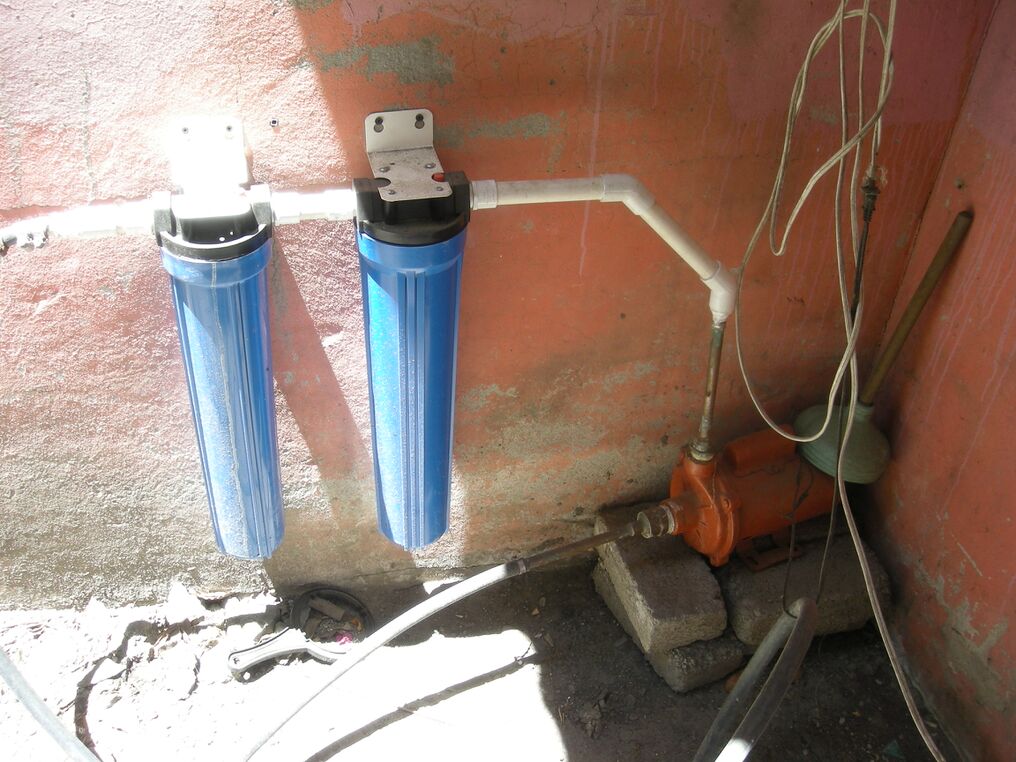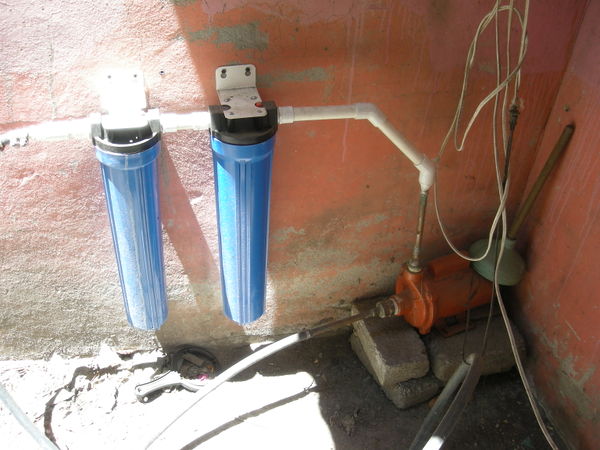The demands of filtering rain water are different from those of filtering municipal and river system water supplies that may include endocrine disrupting chemicals, pharmaceuticals, agrochemicals and industrial chemicals, and unprocessed human and animal waste water. Rain water on the other hand usually only needs to have: any pollutants in the sky, dust particles, tar on roofs, and any chemical products that may be used for anything upon/within the catchment surface filtered out.
When choosing filters Look for:
- Flow rate through filter and effect on ending water pressure
- Which suspended solids and contaminants can it remove
- Sequence of different filters based on which solids and contaminants are removed
- Cost
Filter Sequence for Isla Urbana rainwater catchment systems: Not all of the following filters are used in every system. The majority of systems sole have the pleated sediment filter followed by the activated carbon filter. These two filters alone can help purify the water enough for domestic uses.
1.Pleated Sediment Filter
Removes sediments. The pleats in this filter provide increased surface area for increased removal of sediments. The pleats also allow a small increase in flow rate, however an increase in the flow rate can also somewhat decrease sediment removal. These filters are packaged as cartridges that can be removed and manually cleaned with direct spray into the pleats of the filter. Cost ranges from $8-30.
2.100 Micron Sediment Filter
Removes sediment as small as 100 micrometers. Often made of wound polypropylene.
3.Activated Carbon Filter
Activated carbon is processed charcoal that it is increasingly porous and has a larger surface area for adsorption and other chemical reactions. 1 gram of activated carbon has a surface area in excess of 500 m2. Contaminants in the water are attracted to the carbon and cohese to the surface of the carbon in thin layers. This means the activated carbon filters can be cleaned of these contaminants and reused. Activated Carbon can remove: copper, chlorine, carbohydrates and other dissolved organic materials. Granular activated carbon has also been found to be highly effective at removing pharmaceuticals and endocrine disrupters. However, its also been demonstrated that compounds with greater hydrophilicity pass through activated carbon faster than hydrophobic compounds. If using a reverse osmosis filter placing this Activated Carbon Filter helps preserve the reverse osmosis membrane by removing organic materials and chlorine that degrade the membrane. Cost ranges from $30-80.
4.Reverse Osmosis Filter
- Is great at filtering large molecules and ions from solutions by applying pressure on one side of a selectively permeable membrane. This process is the opposite of natural osmosis where water (or solvent) passes from the area of high solute concentration to the area of low solute concentration. The pure water (or solvent) moves to equalize the solute on both sides generating pressure called the osmotic pressure. Applying pressure on one side reverses this process and is thus called reverse osmosis.
- Reverse osmosis is a common filtering application used in purification of seawater into drinking water.
- Efficiency of filtration is dependent on the concentration of the solute, the pressure, and the rate of water.
5.20” Cellulose Filter
Removes dust from charcoal as well as many trace elements including: lead, mercury, arsenic, aluminum, iron, fluorine, nitrogen, potassium, chlorine, sulfur, and others. Usually made of high density cotton.
6.Silver Ion Filter
- Silver ions have antibacterial properties by inhibiting both the growth of bacterial organisms and their signal transduction.[1]
- two plates of silver are inserted into water piping and charges are alternated across the two plates creating arcs where silver ions jump off into the water.
- ↑ Shrivastava,Siddhartha; Bera,Tanmay; Roy,Arnab; Singh,Gajendra; Ramachandrarao, P; and Dash, Debabrata. Characterization of enhanced antibacterial effects of novel silver nanoparticles. http://iopscience.iop.org/0957-4484/18/22/225103

